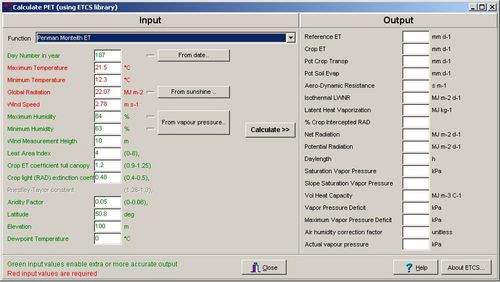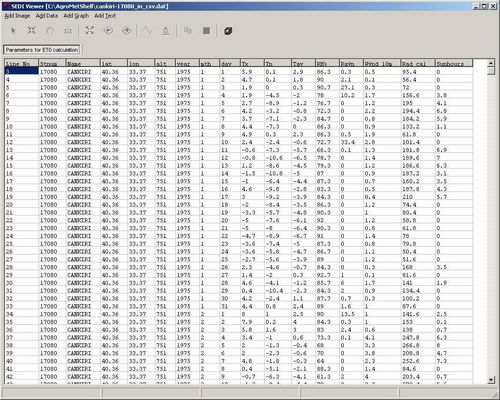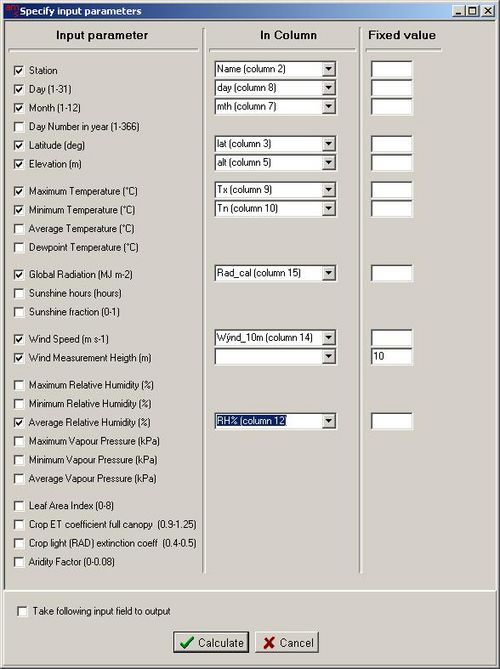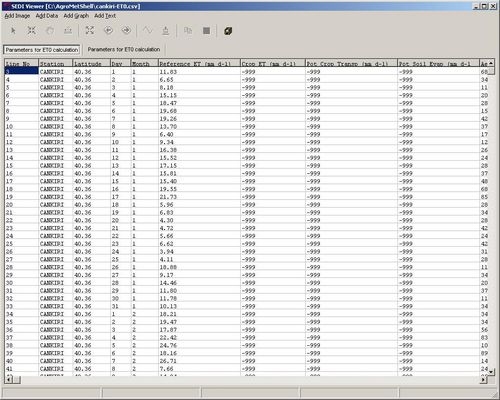Revision as of 09:58, 4 August 2006; view current revision
←Older revision | Newer revision→
Chapter 11. Development of ET0 computation procedure.
Potential evapotranspiration (ET0) is a vital input to Water Balance calculations, which in turn are a vital part in Crop forecasting. The parameters needed to calculate ET0 are the following:
Parameter group Parameters Remarks Temperature Maximum and minimum temperature Some ET0 calculation methods use average temperature only. AgrometShell needs both minimum and maximum temperatures. Radiation (MJ/m2) Global radiation Global radiation can be calculated from sunshine hours or sunshine fraction accompanied by latitude and day in the year (Julian Date). Wind Speed (m/sec) Wind speed at 2 meters Formulas are available to convert wind speed for other heights (e.g. 10 meters) into a 2 meter value. Optional: relative humidity (%) Maximum and minimum relative humidity during the day. Although this parameter is not essential it improves the ET0 calculations substantially. In AgrometShell relative humidity can be calculated from vapour pressure measurements.
Checking data availability in AgrometShellIn AgrometShell activate the Tools – Potential ET – Manual function.
The manual ET0 calculation window 
On the left side the input parameters are specified. On the right side, the outcome is generated, once the Calculate>> button is pressed. Clear the parameters on the left side of the screen and fill them with your own data. Try to calculate. If a value is calculated for the ET0, the top right value (Reference ET) is filled. The From… buttons make it possible to calculate the following parameters in an alternative way:
- Day number in the year
- Global radiation
- Vapour pressure
Calculating ET0 using external ASCII files.
The ET0 calculations can be done in AgrometShell using data from the database or data in external ASCII files. In this paragraph the second option will be outlined.





